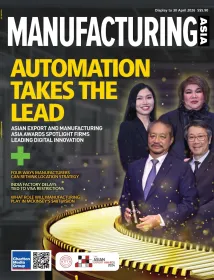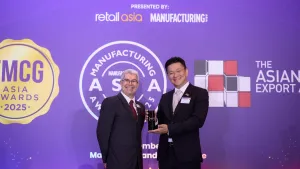
Taiwan manufacturing decline eases in October as tariff impact persists
Sector shows signs of stabilisation with slowest contraction in five months, but US tariffs and weak global demand continue to weigh on orders
Taiwan's manufacturing sector showed tentative signs of stabilisation in October, with output and new orders declining at their slowest pace in five months, though conditions remained challenging amid sluggish global demand and the ongoing impact of US tariffs.
The S&P Global Taiwan Manufacturing Purchasing Managers' Index rose to 47.7 in October from 46.8 in September, marking an improvement but still remaining below the crucial 50.0 threshold that separates growth from contraction. The sector has now weakened for eight consecutive months, though October's decline was the softest since May.
Taiwanese goods producers cut production levels for a seventh straight month, with firms attributing lower output to weaker customer demand. However, whilst the contraction remained solid, the pace of decline was the weakest seen since May.
New orders fell at a slower but still solid pace in October, with manufacturers reporting declines across both domestic and international markets. The impact of US tariffs featured prominently in company reports as a key factor depressing demand.
New export business fell markedly during the month, despite the rate of decline easing to its weakest in five months. There were frequent reports that overseas orders had fallen due to lower sales in the United States, whilst weaker customer demand was also recorded across Europe, mainland China and Japan.
Annabel Fiddes, economics associate director at S&P Global Market Intelligence, said conditions remained "challenging for companies amid reports of sluggish global demand and the impact of US tariffs."
Inventory drawdown accelerates
The sustained fall in new work and lower production requirements led companies to scale back purchasing activity again in October, with the rate of contraction sharp overall and little changed from September.
Companies maintained a cautious approach towards inventory levels, with stocks of both inputs and finished goods falling at the start of the fourth quarter. Notably, stocks of pre-production items declined at the steepest rate in 21 months, reflecting manufacturers' wariness about committing to new materials.
Supply chain pressures persist
Despite firms trimming their input buying, suppliers' delivery times lengthened again in October. Shortages of specific inputs, such as semiconductors, contributed to longer delivery times, adding to manufacturers' difficulties.
More encouragingly, companies signalled only a fractional reduction in headcounts during October, with the rate of job losses the weakest recorded since February. Lower payrolls were generally linked to the non-replacement of voluntary leavers rather than active redundancies.
At the same time, the amount of backlogged work fell at a slower pace. The modest drop in outstanding business was commonly attributed to a lack of incoming new work to replace existing projects.
Inflation returns
Inflationary pressures strengthened at the start of the final quarter, with average input costs rising at their sharpest pace in 15 months. Panel members cited increased costs for raw materials as the driver of higher expenses.
Firms passed on these costs where possible, leading to a fresh increase in average selling prices that was the most pronounced in ten months. Ms Fiddes noted this "suggests official price measures could move upwards in the coming months."
Whilst companies remained generally pessimistic regarding output over the next year, the degree of negative sentiment was less severe than in the three previous months. The confidence index moved closer to the neutral 50.0 level, offering some hope.
Ms Fiddes said the latest developments "hints that the worst of the current downturn is now behind us," though companies that forecast lower production continued to link their concerns to future client demand and the impact of US tariffs.
















